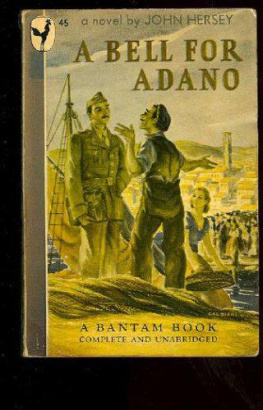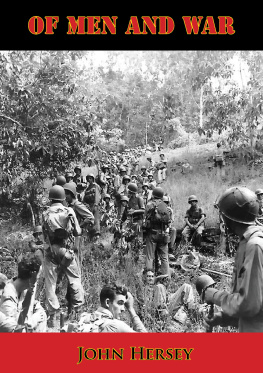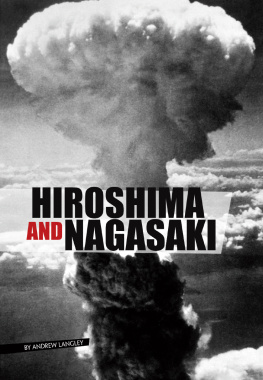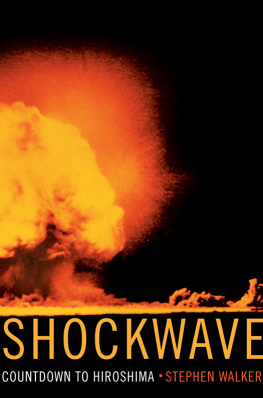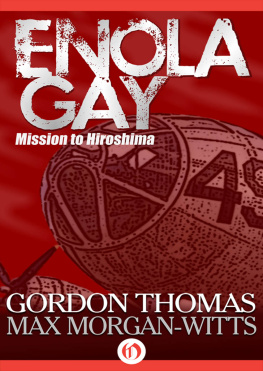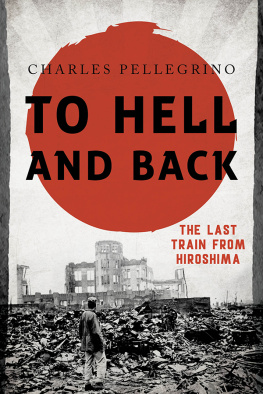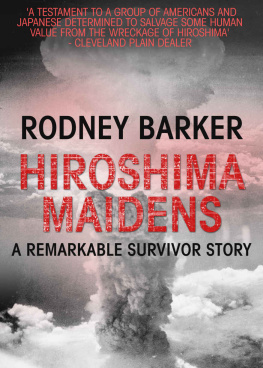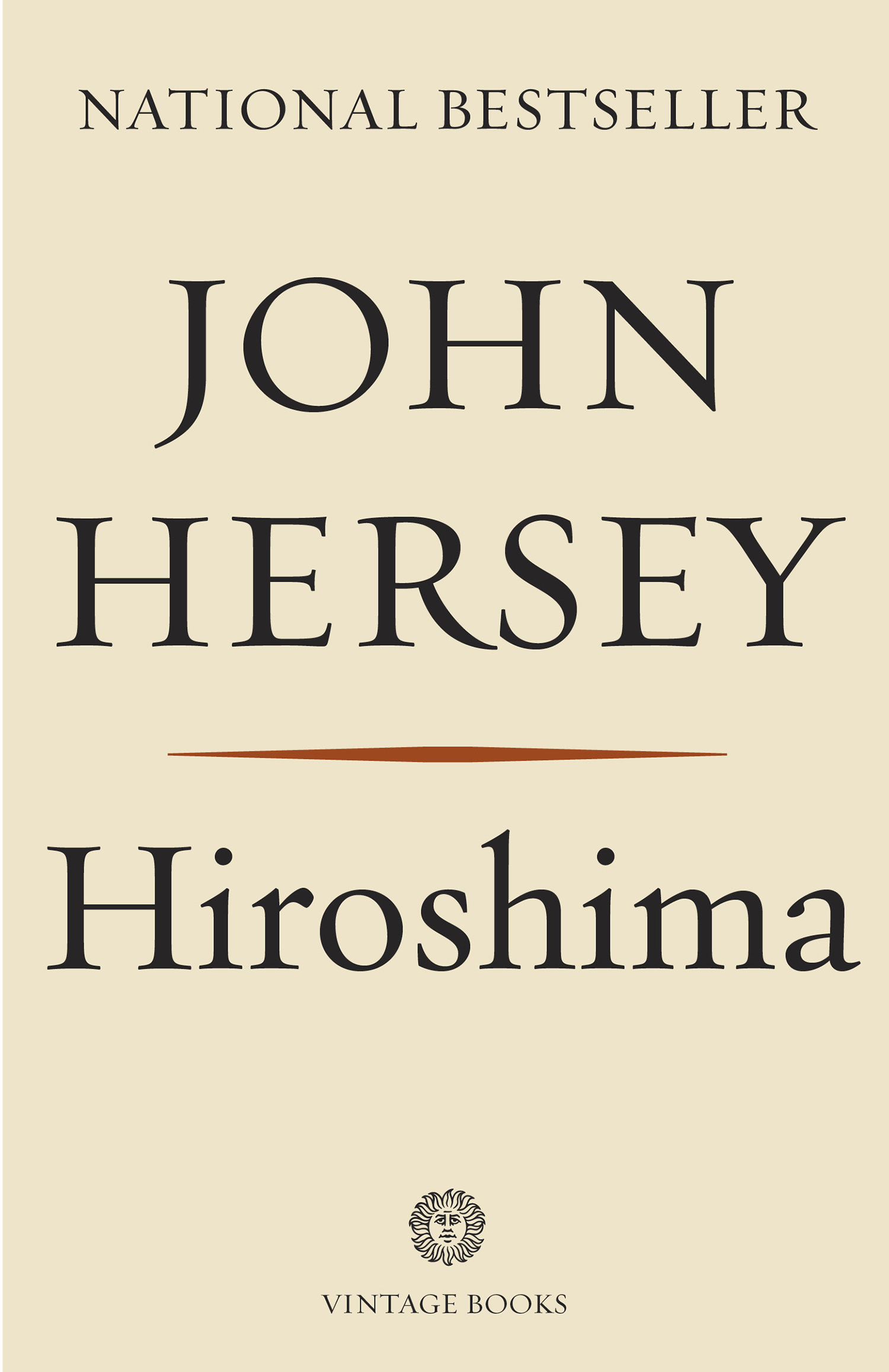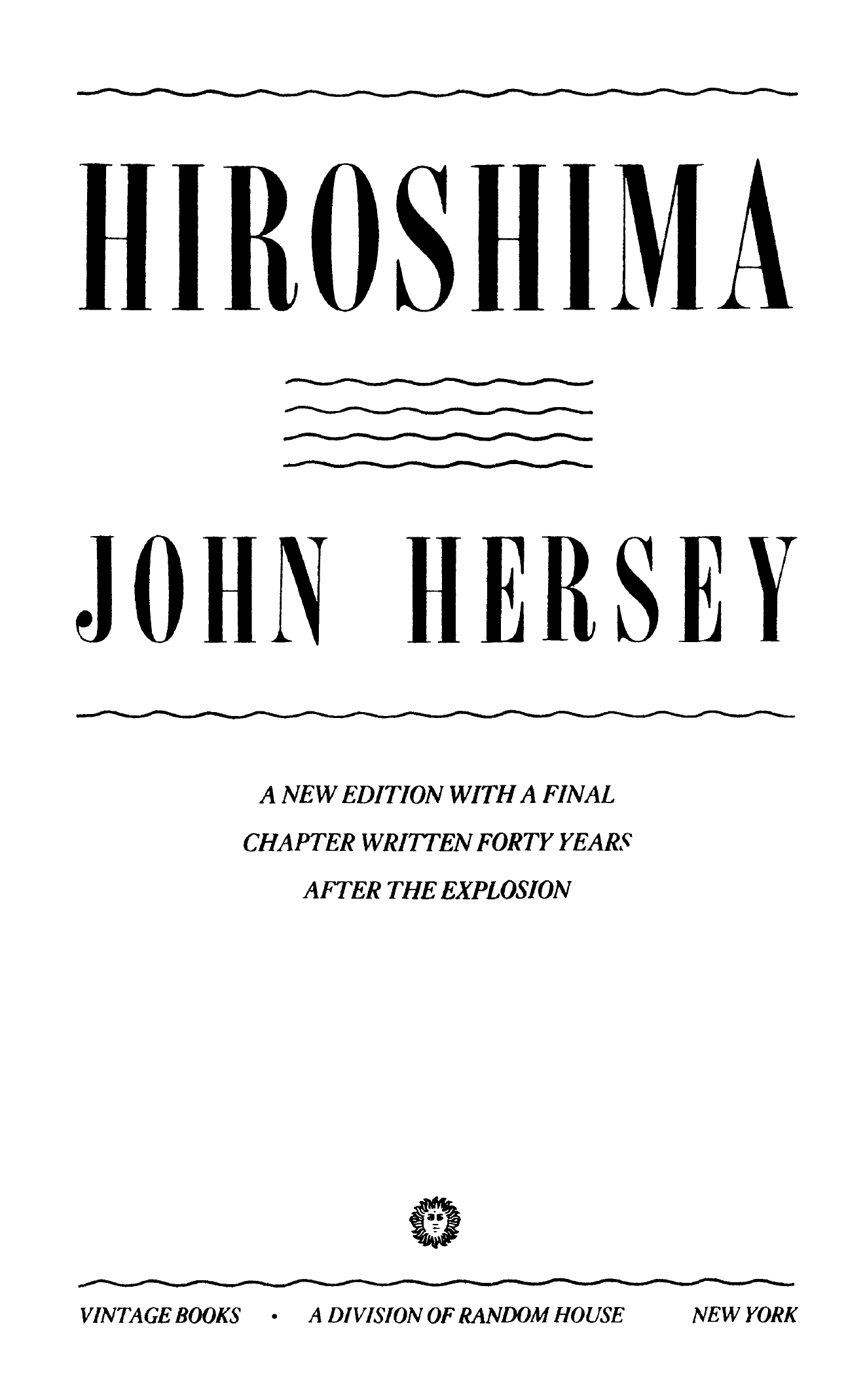Contents
Landmarks
Print Page List
WHEN THE BOMB DROPPED
August 6, 1945
M ISS T OSHINKI S ASAKI , a clerk in the personnel department of the East Asia Tin Works, had just turned her head to chat with the girl at the next desk.
D R . M ASAKAZU F UJII , a physician, had just sat down to read the paper on the porch of his private hospital.
M RS . H ATSUYO N AKAMURA , a tailors widow, was watching a neighbor from her kitchen window.
F ATHER W ILHELM K LEINSORGE , a German priest, lay on a cot in the mission house reading a Jesuit magazine.
D R . T ERUFUMI S ASAKI , a young surgeon, walked along a hospital corridor with a blood specimen for a Wasserman test.
T HE R EVEREND M R . K IYOSHI T ANIMOTO , pastor of the Hiroshima Methodist Church, was about to unload a cart of clothes at a rich mans home in the suburbs.
A HUNDRED THOUSAND PEOPLE WERE KILLED BY THE ATOMIC BOMB . THESE SIX WERE AMONG THE SURVIVORS . JOHN HERSEY TELLS YOU THEIR STORIES . AND IN THIS NEW EDITION , HE HAS RETURNED TO FIND THEM FORTY YEARS LATER TO TELL YOU THEIR FATES .
ALSO BY JOHN HERSEY
BLUES (1987)
THE CALL (1985)
THE WALNUT DOOR (1977)
THE PRESIDENT (1975)
MY PETITION FOR MORE SPACE (1974)
THE WRITER S CRAFT (1974)
THE CONSPIRACY (1972)
LETTER TO THE ALUMNI (1970)
THE ALGIERS MOTEL INCIDENT (1968)
UNDER THE EYE OF THE STORM (1967)
TOO FAR TO WALK (1966)
WHITE LOTUS (1965)
HERE TO STAY (1963)
THE CHILD BUYER (1960)
THE WAR LOVER (1959)
A SINGLE PEBBLE (1956)
THE MARMOT DRIVE (1953)
THE WALL (1950)
A BELL FOR ADANO (1944)
INTO THE VALLEY (1943)
FIRST VINTAGE BOOKS EDITION, FEBRUARY 1989
Copyright 1946, 1985 by John Hersey
Copyright renewed 1973 by John Hersey
All rights reserved under International and Pan-American Copyright Conventions. Published in the United States by Random House, Inc., New York, and simultaneously in Canada by Random House of Canada Limited, Toronto. Originally published, in different form, by Alfred A. Knopf, Inc., in 1946. This edition originally published, in hardcover, by Alfred A. Knopf, Inc. in 1985.
Library of Congress Cataloging-in-Publication Data
Hersey, John, 1914
Hiroshima.
Reprint. Originally published: New York:
A.A. Knopf, 1985.
1. Hiroshima-shi (Japan)HistoryBombardment, 1945.
2. World War, 19391945JapanHiroshima-shi.
3. Atomic bombBlast effect. I. Title.
D767.25.H6H4 1989940.542588-40016
ISBN 0-679-72103-7 (pbk.)
Ebook ISBN9780593080696
The entire contents of this book originally appeared in The New Yorker.
v5.4_r1
a
CONTENTS
ONE
A NOISELESS FLASH
A T EXACTLY fifteen minutes past eight in the morning, on August 6, 1945, Japanese time, at the moment when the atomic bomb flashed above Hiroshima, Miss Toshiko Sasaki, a clerk in the personnel department of the East Asia Tin Works, had just sat down at her place in the plant office and was turning her head to speak to the girl at the next desk. At that same moment, Dr. Masakazu Fujii was settling down cross-legged to read the Osaka Asahi on the porch of his private hospital, overhanging one of the seven deltaic rivers which divide Hiroshima; Mrs. Hatsuyo Nakamura, a tailors widow, stood by the window of her kitchen, watching a neighbor tearing down his house because it lay in the path of an air-raid-defense fire lane; Father Wilhelm Kleinsorge, a German priest of the Society of Jesus, reclined in his underwear on a cot on the top floor of his orders three-story mission house, reading a Jesuit magazine, Stimmen der Zeit; Dr. Terufumi Sasaki, a young member of the surgical staff of the citys large, modern Red Cross Hospital, walked along one of the hospital corridors with a blood specimen for a Wassermann test in his hand; and the Reverend Mr. Kiyoshi Tanimoto, pastor of the Hiroshima Methodist Church, paused at the door of a rich mans house in Koi, the citys western suburb, and prepared to unload a handcart full of things he had evacuated from town in fear of the massive B-29 raid which everyone expected Hiroshima to suffer. A hundred thousand people were killed by the atomic bomb, and these six were among the survivors. They still wonder why they lived when so many others died. Each of them counts many small items of chance or volitiona step taken in time, a decision to go indoors, catching one streetcar instead of the nextthat spared him. And now each knows that in the act of survival he lived a dozen lives and saw more death than he ever thought he would see. At the time, none of them knew anything.
T HE Reverend Mr. Tanimoto got up at five oclock that morning. He was alone in the parsonage, because for some time his wife had been commuting with their year-old baby to spend nights with a friend in Ushida, a suburb to the north. Of all the important cities of Japan, only two, Kyoto and Hiroshima, had not been visited in strength by B-san, or Mr. B, as the Japanese, with a mixture of respect and unhappy familiarity, called the B-29; and Mr. Tanimoto, like all his neighbors and friends, was almost sick with anxiety. He had heard uncomfortably detailed accounts of mass raids on Kure, Iwakuni, Tokuyama, and other nearby towns; he was sure Hiroshimas turn would come soon. He had slept badly the night before, because there had been several air-raid warnings. Hiroshima had been getting such warnings almost every night for weeks, for at that time the B-29s were using Lake Biwa, northeast of Hiroshima, as a rendezvous point, and no matter what city the Americans planned to hit, the Superfortresses streamed in over the coast near Hiroshima. The frequency of the warnings and the continued abstinence of Mr. B with respect to Hiroshima had made its citizens jittery; a rumor was going around that the Americans were saving something special for the city.
Mr. Tanimoto was a small man, quick to talk, laugh, and cry. He wore his black hair parted in the middle and rather long; the prominence of the frontal bones just above his eyebrows and the smallness of his mustache, mouth, and chin gave him a strange, old-young look, boyish and yet wise, weak and yet fiery. He moved nervously and fast, but with a restraint which suggested that he was a cautious, thoughtful man. He showed, indeed, just those qualities in the uneasy days before the bomb fell. Besides having his wife spend the nights in Ushida, Mr. Tanimoto had been carrying all the portable things from his church, in the close-packed residential district called Nagaragawa, to a house that belonged to a rayon manufacturer in Koi, two miles from the center of town. The rayon man, a Mr. Matsui, had opened his then unoccupied estate to a large number of his friends and acquaintances, so that they might evacuate whatever they wished to a safe distance from the probable target area. Mr. Tanimoto had had no difficulty in moving chairs, hymnals, Bibles, altar gear, and church records by pushcart himself, but the organ console and an upright piano required some aid. A friend of his named Matsuo had, the day before, helped him get the piano out to Koi; in return, he had promised this day to assist Mr. Matsuo in hauling out a daughters belongings. That is why he had risen so early.


